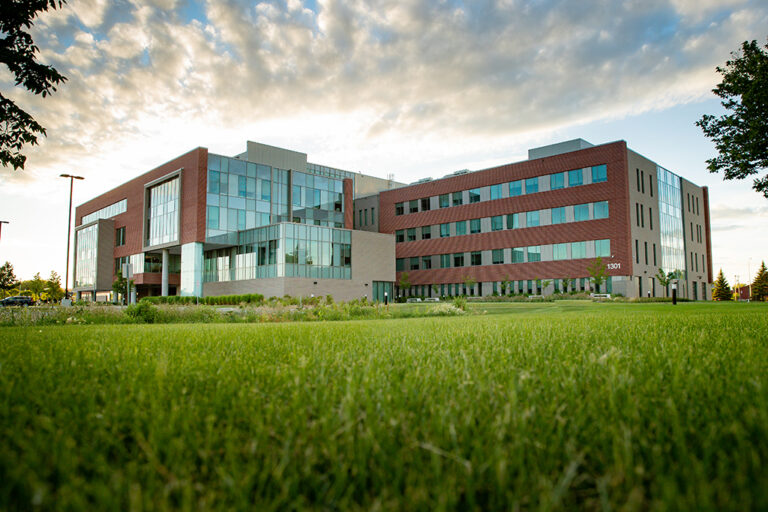From the Dean: Why is Medicare spending leveling off?
I’ve mentioned various upcoming UND and UND SMHS events in prior columns, but here is a brief update regarding this coming week’s schedule. Please access the accompanying information below for further details:
- Java with Josh, Thursday, Sept. 28 – Please log on and join us for a virtual event during which I will update the UND SMHS community regarding important recent school developments and – more importantly – answer questions and discuss inquiries from attendees. Further details are available here.
- M.D. in a Day, Friday, Sept. 29 – An opportunity for state legislators to experience first-hand what it’s like to be a medical student, all condensed into a one-day experience! For any state legislators who have not yet registered but are interested in attending the event that will be held in Grand Forks, please contact Brian Schill at brian.schill@UND.edu.
Also, I’d like to thank everyone who was planning on participating in the 14th annual Joggin’ with Josh outing yesterday. The event is a 5K/10k walk, jog, run (or crawl!) around the beautiful UND campus. We had to postpone the event due to thunderstorms in the region, and will let you know just as soon as an alternate date is confirmed.
Switching gears somewhat, I’d like to comment on some fascinating data that recently have come to light regarding healthcare costs in the U.S. This topic is very much on my mind because I’ve recently completed a variety of teaching encounters with several different classes of our students. One of the themes that I’ve discussed with them (and of course well known to all of you) is the high cost of healthcare in the U.S. As you undoubtedly are well aware, our healthcare costs are substantially higher (both per individual and in total) than for any other country on earth. Not only that, but costs also have been progressively increasing over time.
The fascinating new data relate to Medicare expenditures, which historically have been a huge program, with annual expenditures in the range of three quarters of a trillion dollars. (Medicare is the federal program that provides funding for a variety of healthcare costs for seniors, and certain other individuals such as those with chronic kidney disease, that is one of the most – if not the most – revered federal programs in existence.) What is remarkable about Medicare expenditures is that while overall spending has increased over time as more and more baby boomers enroll, data show that since 2011, spending per beneficiary has remained almost flat. This remarkable finding was first reported and analyzed by Dr. David Cutler and his colleagues in 2019 (see Health Affairs, doi: 10.1377/hlthaff.2018.05372), and the trend has continued since then (see New York Times, Sept. 4, 2023).
This flattening of spending per beneficiary prompts any number of intriguing questions: What caused it? Is it a temporary perturbation or will it be sustained? What are the implications for healthcare spending going forward? Have there been fundamental changes (for the better hopefully) in the way we deliver healthcare?
Unfortunately, we don’t yet have any clear answers to these questions, but further research should help answer at least some of these uncertainties. It has been suggested, for example, that the flattening of spending is the result of improvements in our healthcare delivery system, potentially with a reduction in the frequency of low-yield procedures and care delivery efforts that are expensive and yet don’t materially improve patient outcomes. I do believe that fundamental changes are occurring in this regard, and they probably are playing some role in this flattening of the cost curve. But if I’m right, and these changes are in fact playing a role, then why haven’t we seen similar findings with expenditures by other payors? Part of the answer could be that Medicare preferentially deals with senior citizens while other payors cover a wider spectrum of patients. Nevertheless, the question remains as to why Medicare spending per enrollee has largely flattened while the same does not appear to be true for other payors.
These new findings again emphasize the critical importance of rigorously looking at data so that we can try to understand – and tweak – the huge healthcare enterprise we have in the U.S. After all, an industry that accounts for almost a fifth of the entire economic productivity of the country certainly is a critical one to understand!
Finally, I’d like to congratulate the faculty members who were recognized this past Tuesday at UND’s Promotion and Tenure dinner celebration. UND SMHS faculty members who were honored for their recent promotion and/or tenure include:
- Rebecca Bakke, Department of Medical Laboratory Science – Promoted to Assistant Professor
- Catherine Brissette, Department of Biomedical Sciences – Promoted to Professor
- Roberta Carrlson, Department of Occupational Therapy – Promoted to Assistant Professor
- Emilie DeKrey, Department of Surgery – Promoted to Research Associate Professor
- Jessa Hulteng, Department of Occupational Therapy – Promoted to Assistant Professor
- Sarah Nielsen, Department of Occupational Therapy – Promoted to Professor
- Sandeep Singhal, Department of Pathology – Promoted to Associate Professor and granted tenure
Well done and best wishes going forward!
Joshua Wynne, MD, MBA, MPH
Vice President for Health Affairs, UND
Dean, UND School of Medicine & Health Sciences



